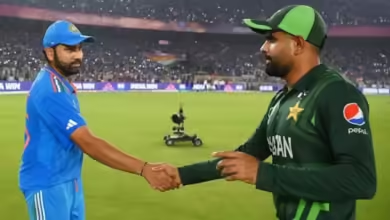euthanasia vs law

Pramod Bhargava
Most of the citizens of Western countries are demanding the facility of death by will or voluntarily. Public opinion also seems to be forming in its favor. In Spain, in the year 2002, 60 percent of the people stood in favor of the death penalty by seeking medical help. When a referendum was held on the same issue in 2019, thirty one percent of the people came in support. In fact, the culture of death is also changing with the availability of easy methods of death. Instead of moving towards excruciating and costly death due to treatment, people have started wishing for a good and speedy death. The demand for such death increased further during the Corona period, when people remained alone despite having a full family in hospitals and even after death, the last rites were performed not by loved ones, but by strangers.
Until thirty years ago in the history of euthanasia, it was banned all over the world except in Switzerland. In the year 1997, in the US state of Oregon, citizens got the right to the law of death by honor. In this, two doctors were empowered to certify that the patient is in a position to choose euthanasia and that his life is not more than six months.
Now this law has expanded to ten states of America. In the same month, euthanasia bills were also approved in Australia and Portugal. Earlier in October, Britain’s upper house, the House of Lords, also passed a law on euthanasia. Now it needs the support of the House of Commons and the government. In Britain, three-quarters of citizens are in favor of this law, but MPs are only thirty-five percent. Therefore it is impossible to make this law at the moment.
The European Court of Human Rights ruled in 2011 that people have the right to decide on the time and manner of their death. Germany’s Supreme Court last year ruled that a ban on the right to death was unconstitutional. Catholic countries such as Austria, Chile, Ireland, Italy and Uruguay are accepting it. The governments of Belgium, Colombia and the Netherlands have also included dying children in allowing euthanasia.
The idea of allowing euthanasia and death has been going on in the world for many years. India is also involved in this. In this context, our Supreme Court in a landmark judgment has recognized the fact that a patient suffering from an incurable disease can write a will. The court’s ruling allows doctors to remove life-saving equipment from terminally ill patients. The court has said that a person who does not wish to live should not be allowed to suffer bodily pain in an inactive or unconscious state.
This permission to write advance will has been given with certain conditions. It is mentioned in this that until a law is made in this regard from the Parliament, the guidelines given in the decision will be effective. The basis points of who can write a will and on what basis can the Board of Physicians give consent for euthanasia, are given in the decision. Although some medical scientists, human rights and social organizations are still against euthanasia.
When a person falls into a state of neem-unconsciousness due to serious illness or accident, loss of memory, loss of energy from eating and drinking and routine, and he is unable to even realize his existence, then Death seems to be necessary to get rid of sufferings. Keeping the patient on life support system in such a situation is tantamount to torture. The family and well-wishers also suffer indirectly from this painful life. The family also has to bear the financial burden.
In India, this issue became the subject of discussion and debate across the country when a plea was made in the Supreme Court for the death of Mumbai nurse Aruna Shanbaug. Aruna suffered the torture of being on life support for forty-two years. When all medical efforts to bring Aruna back to normalcy were in vain, a petition was filed in the court to grant her euthanasia. But then the court did not justify it. In 2011, an application was also made in the Supreme Court to the effect that Aruna’s treatment was not possible, so she should be allowed to be freed from life support system. But the court could not reach a final conclusion on whether euthanasia is valid or not.
Therefore, raising the question of legal recognition of the process of death by removing the life-saving system of a person lying in an inactive state, issuing notices to all the states and union territories and seeking advice. In favor of inviting consideration of euthanasia, he argued that this issue is not only related to the constitution, but also to morality, religion and medical science, so it is necessary to consider it.
On the contrary, the central government kept saying that it is a type of suicide, which cannot be allowed in India, because if euthanasia is legalized, it can be misused. In response, the Constitution Bench argued that there should be safeguards to prevent its misuse. The court had said that the misuse of the law cannot be a ground for not granting a legal status to euthanasia. The Law Commission had also opposed the idea of legal recognition of euthanasia in its report.
Article 21 of the Constitution gives the right to life with dignity, but it does not include the right to the choice of death with dignity. Thousands of people commit suicide every year due to incurable disease, unemployment, poverty, debt, family problems and systemic problems. There are many people among them, who ask the permission of euthanasia from the Collector to the President to get rid of these troubles. Whereas euthanasia and suicide are two different subjects.
In the Indian Penal Code (IPC), euthanasia is considered under sections 302 and 304. It has also been considered as an offense participatory with section 306 of suicide. But this coordination is appropriate only when a healthy person is seeking euthanasia after reaching the peak of despair. Associated currents of suicide should not be equated with the demand for euthanasia for a person with neem unconsciousness, as such a person has almost lost all hope of a cure.
It is also necessary to reach the final settlement of the dispute of euthanasia, because in the modern medical system such systems of survival have been developed, which keep the link of life and death entangled for a long time. Privatization in medicine is giving further impetus to such measures. The number of people injured in traffic-related accidents in the country is continuously increasing, who are unconscious for years.
Only through the survival system, to an extent, the air of life is maintained in them. Due to the treatment of such patients, the relatives are either becoming poor or are being forced to show the ruthlessness of leaving the patients in the hospital itself. This crisis is deepening in the growing small and nuclear families.
The post euthanasia vs law appeared first on Jansatta.
,





